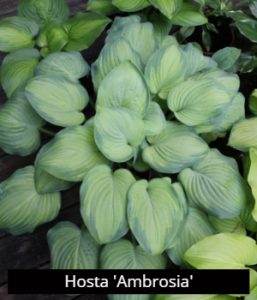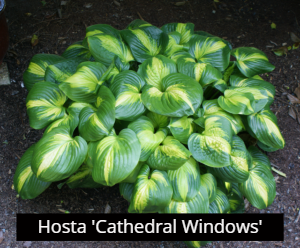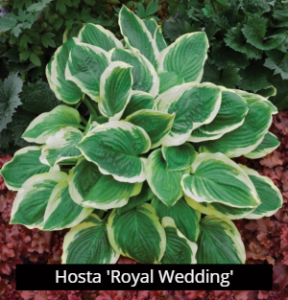Why Grow Fragrant Hostas?
When choosing a new hosta for your garden, very few of you take the flower performance into suggestion for your choice. The majority of people choose the hostas they want because of the leaf color, shape and size. You may not care about the flowers, and I know a lot of people who cut them off before they even bloom, but hostas with fragrant flowers aren’t just grown for their flowers. Hostas with fragrant flowers can be quite versatile and perform where others don’t. When I am asked for a hosta that can tolerate a lot of sun I immediately think of 3-5 fragrant hostas to fit the bill. When I am asked for hostas that do well down south, I immediately think of those same hostas. Why do I immediately go towards a fragrant hosta for these conditions? Let’s talk about it!
Where do we start?
The only fragrant species of hosta that grows in the wild is H. plantaginea. It is found in southern China where summers are hot and humid. H. plantaginea has glossy green leaves that can handle quite a bit of sun with little damage. The ultimate prize from this hosta are the very large fragrant white flowers that are produced in late summer, sometimes early autumn. These 6 inch long flowers look like trumpets calling out for all to see.
One issue with H. plantaginea is that it tends to emerge from its winter hibernation too early in spring and is susceptible to late freezes and frosts. When plants are young, this can be the demise of this hosta. Most years this hosta looks less than desirable from the time it emerges until the heat of summer arrives as the first flush of leaves is damaged. When the heat of summer arrives this hosta jumps into a second gear and shows off when most other hostas start to look tired. Unlike other species, plantaginea produces new leaves throughout the summer months so there is always a new clean flush of growth on the clump.I can walk around our gardens in August and know which hostas will look their best. Most of them have plantaginea in their lineage.
Another issue with plantaginea is that it may not bloom some years if your summer is not long and hot. Many times the plants send up the flower scape only to see it get bit by an autumn frost.
How does this pertain to other fragrant hostas?
Like I said earlier, plantaginea is the only fragrant species of hosta so if another hosta has fragrant flowers, it has plantaginea in its lineage. With the help of hybridizers, we now have the fragrance of plantaginea crossed with more dependable growing hostas to produce a new breed of fragrant hostas. Even though these new fragrant hostas have other traits in them, they tend to have the same assets and faults.
Most fragrant hostas can handle a lot of sun with very little damage especially with good soil and adequate moisture. They love the heat of summer and tend to look their best from July to October. Like plantaginea, they do tend to emerge too early and can be damaged by late frosts but they do grow out of it and look great in summer. Unlike the flower issues of plantaginea, hybrids of plantaginea tend to flower earlier so you can always depend on getting to enjoy those beautifully scented trumpets. The best part of these new hybrids is the contrast in colors. The newer hybrids have yellow, white and blue shades and more leaf characteristics so they contrast better in different gardening situations.
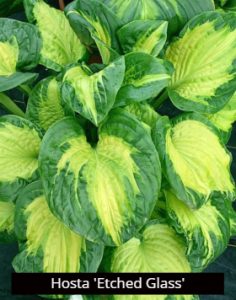 How do I use fragrant hostas?
How do I use fragrant hostas?
Fragrant hostas have many uses in the garden and container plantings due to their versatility and fragrance. Since these hostas have fragrant flowers I always recommend planting them where you and others will pass by often so you can enjoy the sweet honeysuckle scent. You can also use the fragrant hostas in containers that you can place on a porch or patio. They look great all summer and reward you in late summer with the fragrant blooms.
If you’re into cutting fresh bouquets, try adding some fragrant hostas to your bouquet. The flowers last up to 3 weeks in a vase and add their sweet aroma to the bouquet.
Fragrant hostas can handle more sun than most other hostas so you have more choices of where to plant them. As with all hostas, we recommend amending the soil the best you can with organic matter. Incorporating compost and peat moss into your existing soil will greatly assist your new hostas so they can perform the way you want them to. Amending the soil can really help keep the soil moist during dry periods as well. Hostas are very versatile and can handle many conditions but they will not perform their best if the soil is poor and dry especially when given lots of sun exposure.
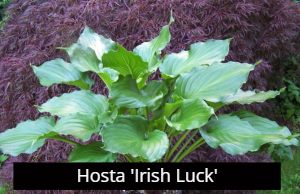 In Ending
In Ending
I hope this information has been helpful and that you now know why fragrant hostas are so versatile and how to use them. If you have a sunny area or live in the south where summers are long and hot, fragrant hostas are your best bet for success. See the fragrant hostas NH Hostas has to offer.

